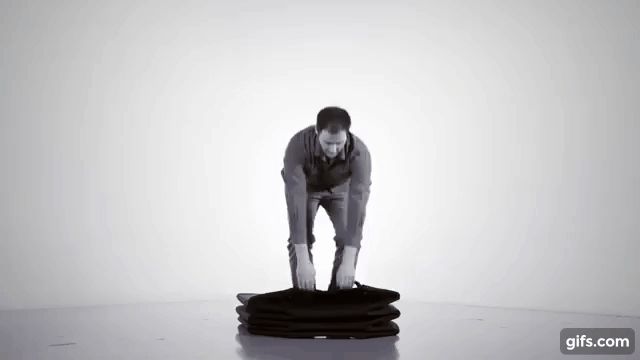What if you lost your home? How finding a place to sleep in Toronto has become a nearly impossible task
If you lost your home, would there be shelter for you? It’s a simple question, but in Toronto getting a clear answer means wading through a labyrinthine system that can change by the hour — and often ends in disappointment.As the winter weather that has historically challenged the shelter network’s ability to catch people in crisis arrives, the Star examined a single week in a system that, data shows, is already struggling to cope with mounting pressures.In the seven days leading up to city hall releasing its winter shelter plan on Nov. 7, adult emergency shelters and respites were always reported over 98 per cent capacity, despite unseasonably warm weather then. But even those figures can paint an overly optimistic view. Some nights, dozens of hotel rooms were counted as available, but that included rooms at the Bond Place Hotel the city has been recently emptying of shelter occupants in order to convert its rooms into housing. City summaries of the occupancy data also sometimes counted beds in facilities that were just entering the system, though they didn’t yet have any occupants.Even still, men’s emergency shelters never reported more than 15 spaces open at night’s end. For women, the numbers were worse, with no more than four. One night, if you were an adult woman calling, there were no emergency beds left — not in women’s shelters or coed spaces. Across all nights, there was never more than one emergency bed left that could be used by either men or women outside of the hotel system.If you were between 16 and 24, or had small children in tow, your odds of finding an emergency bed were slightly better. But on six of seven nights, Toronto’s 24-hour respite facilities — meant to be easier to access than shelters — were totally full. On the one outlier night, there was a single coed space unclaimed.“A lot of people I know aren’t even trying anymore,” said Greg Cook, an outreach worker with Sanctuary Toronto. When told that space wasn’t available, he said, people have a choice — either bank on calling back again and again until something opened up, or make another plan. That could mean panhandling for change to buy a coffee and hunker down in a 24-hour Tim Hortons or McDonalds, he said, or trying to keep warm on transit until the lines stopped running in the wee hours. It could also mean finding a sleeping bag or a tent and weathering the night under the elements. “It’s very clear that it keeps getting exponentially worse,” Cook said. Call and call againTo find shelter in Toronto, you start with a phone call. The city operates a central intake line, which offers referrals to shelters and respites based on available space. After asking for a bit of information — are you a single individual, a couple, a family? — the operator then checks a database of beds. Timing, here, is everything.Hundreds of calls come in to the intake line each day: 749, on average, in October.Fewer than 20 daily calls, on average, resulted in someone getting a bed that month. If you, like most callers, were told that no beds or rooms that fit your needs were available, you may be told to try again later — with hopes that next time space somewhere had emptied out. One challenge here, outreach workers have pointed out, is that many people facing homelessness don’t have reliable access to cellphones to check in repeatedly.If there is any space, Cook says people are usually given two hours to get to a shelter, which can be in places far from the core like North York. If someone is on their own without money for the TTC, he said the choice becomes whether to hope staff look the other way, or risk a ticket for fare evasion. “A lot of people, because it’s a bed, will risk going on transit,” Cook said. In an ever-changing system, the data reflecting beds empty as of 4 a.m. doesn’t mean people haven’t been turned away the same day. If an adult man called for shelter at 2 p.m., for example, he might be told there were no men’s beds left, because all spaces were already claimed — including by those who stayed in the system the previous night.But if an expected person didn’t turn up, that bed may later be logged as empty. Conversely, shelters being packed at 4 a.m. doesn’t mean there weren’t beds available earlier in the day. It’s an imperfect snapshot — but the most timely glimpse available to the public.One night, little spaceTo understand the state of the city’s shelters as the weather starts to drop, the Star took a closer look at a single night in the context of the seven-day period. If you suddenly found yourself without a place to rest your head on Wednesday, Nov. 2, here’s what you’d be up against.If you were looking for a respite, all facilities were packed to capacity by night’s end, as was the case most other days. Only Thursday that week had any vacancy, with a single at a coed facility at 21 Park Rd.Looking at emergency shelters, the city’s daily occupancy report says there were 15 men’s beds unoccupied, while 940 beds were filled.


If you lost your home, would there be shelter for you?
It’s a simple question, but in Toronto getting a clear answer means wading through a labyrinthine system that can change by the hour — and often ends in disappointment.
As the winter weather that has historically challenged the shelter network’s ability to catch people in crisis arrives, the Star examined a single week in a system that, data shows, is already struggling to cope with mounting pressures.
In the seven days leading up to city hall releasing its winter shelter plan on Nov. 7, adult emergency shelters and respites were always reported over 98 per cent capacity, despite unseasonably warm weather then.
But even those figures can paint an overly optimistic view.
Some nights, dozens of hotel rooms were counted as available, but that included rooms at the Bond Place Hotel the city has been recently emptying of shelter occupants in order to convert its rooms into housing. City summaries of the occupancy data also sometimes counted beds in facilities that were just entering the system, though they didn’t yet have any occupants.
Even still, men’s emergency shelters never reported more than 15 spaces open at night’s end. For women, the numbers were worse, with no more than four. One night, if you were an adult woman calling, there were no emergency beds left — not in women’s shelters or coed spaces. Across all nights, there was never more than one emergency bed left that could be used by either men or women outside of the hotel system.
If you were between 16 and 24, or had small children in tow, your odds of finding an emergency bed were slightly better. But on six of seven nights, Toronto’s 24-hour respite facilities — meant to be easier to access than shelters — were totally full. On the one outlier night, there was a single coed space unclaimed.
“A lot of people I know aren’t even trying anymore,” said Greg Cook, an outreach worker with Sanctuary Toronto. When told that space wasn’t available, he said, people have a choice — either bank on calling back again and again until something opened up, or make another plan.
That could mean panhandling for change to buy a coffee and hunker down in a 24-hour Tim Hortons or McDonalds, he said, or trying to keep warm on transit until the lines stopped running in the wee hours. It could also mean finding a sleeping bag or a tent and weathering the night under the elements.
“It’s very clear that it keeps getting exponentially worse,” Cook said.
Call and call again
To find shelter in Toronto, you start with a phone call.
The city operates a central intake line, which offers referrals to shelters and respites based on available space. After asking for a bit of information — are you a single individual, a couple, a family? — the operator then checks a database of beds. Timing, here, is everything.
Hundreds of calls come in to the intake line each day: 749, on average, in October.
Fewer than 20 daily calls, on average, resulted in someone getting a bed that month. If you, like most callers, were told that no beds or rooms that fit your needs were available, you may be told to try again later — with hopes that next time space somewhere had emptied out.
One challenge here, outreach workers have pointed out, is that many people facing homelessness don’t have reliable access to cellphones to check in repeatedly.
If there is any space, Cook says people are usually given two hours to get to a shelter, which can be in places far from the core like North York. If someone is on their own without money for the TTC, he said the choice becomes whether to hope staff look the other way, or risk a ticket for fare evasion. “A lot of people, because it’s a bed, will risk going on transit,” Cook said.
In an ever-changing system, the data reflecting beds empty as of 4 a.m. doesn’t mean people haven’t been turned away the same day. If an adult man called for shelter at 2 p.m., for example, he might be told there were no men’s beds left, because all spaces were already claimed — including by those who stayed in the system the previous night.
But if an expected person didn’t turn up, that bed may later be logged as empty. Conversely, shelters being packed at 4 a.m. doesn’t mean there weren’t beds available earlier in the day.
It’s an imperfect snapshot — but the most timely glimpse available to the public.
One night, little space
To understand the state of the city’s shelters as the weather starts to drop, the Star took a closer look at a single night in the context of the seven-day period. If you suddenly found yourself without a place to rest your head on Wednesday, Nov. 2, here’s what you’d be up against.
If you were looking for a respite, all facilities were packed to capacity by night’s end, as was the case most other days. Only Thursday that week had any vacancy, with a single at a coed facility at 21 Park Rd.
Looking at emergency shelters, the city’s daily occupancy report says there were 15 men’s beds unoccupied, while 940 beds were filled. That would mean an occupancy rate of 98.4 per cent.
But more detailed data released by the city through its Open Data program paints a harder picture, indicating that just two men’s emergency beds were in fact available. Both were at Seaton House, a large dormitory-style shelter near Jarvis and Gerrard Streets.
When asked about the discrepancy, city staff said its overall count included two “small programs” that were “in the process of being brought online” — but did not have occupants.
It wasn’t the only night with a difference between the summaries and detailed data set; on Nov. 6, the summary listed 10 open men’s emergency beds. The data set meanwhile listed none.
City staff told the Star its summaries could include beds in the process of being brought online or decommissioned on any one night. They said city occupancy reports were “not a good reflection” of space, as they didn’t account for beds that may have been available earlier in the day, and suggested the Star look data on the outcome of calls to their intake team instead.
The latest available call data, from October, showed an average of 186.8 people each day left unmatched with shelter by night’s end, up from 24.7 a year earlier. That data also shows an average of 18.9 callers per day got a shelter space, down from 31 callers last October.
Looking back at the occupancy data, women would have a harder time on Wednesday. There were no beds left in women’s emergency shelters, nor coed emergency shelters, anywhere in Toronto by night’s end. (There were four family spaces left available to women with children.) The other six days of the week, there was at least one women’s bed, but space was tight.
“There’s a huge risk,” Cook said. “Anybody who isn’t able to lock their door and have that security, you’re at risk, but I think it’s especially the case for people who are trans and who are women, because violence against women and trans people is really high.”
The four spaces for families were fairly consistent with the rest of the week, as there were always between three and five emergency spaces left. But on all but one of the seven days, there was no space in family-specific hotels and motels, with a spot available only on Sunday.
Hotels are their own segment of the data, tallied separately from the base emergency spaces.
That’s where the Bond Place Hotel becomes a complication. Each night in the seven days, there were between 12 and 16 rooms reported as unoccupied at that facility despite the shelter halting new admissions while the city converts the hotel it bought into long-term housing.
The city, asked about the Bond specifically, said its data could include rooms being decommissioned that hadn’t yet been removed from its information system — as well as those offline for other reasons, such as cleaning, maintenance or pest control.
“It’s really, really, frustrating,” Cook said. “It sends the message that they have things under control, that if people did just really want services they could just call again and again … it paints this picture that things are OK and it’s not a crisis, when it’s been a crisis for a long time.”
A bleak forecast
On the last day of the week, city hall released its plan for the winter.
It promised to add roughly 230 beds, with 100 new hotel rooms for refugees and 132 spaces for single people by expanding the capacity of existing sites.
Advocates decried the plan as inadequate, noting that with pressure mounting, last year’s winter plan promised more space — particularly in warming centres — than this year’s. Last year’s plan also needed to be upped as the cold bore on.
Gord Tanner, head of the city’s shelter department, says this winter’s plan may evolve. But he also stressed that more aid was needed from other governments to fund affordable housing, in order to give people an exit ramp from the embattled system.
“Despite continuing to add beds, the ever-increasing pressure on the shelter system — which is at capacity most nights — continues,” Tanner said at city hall. “The reality is that simply adding additional beds to the system is a short-term emergency solution that is not sustainable.”
Victoria Gibson is a Toronto-based reporter for the Star covering affordable housing. Reach her via email: victoriagibson@thestar.ca




















